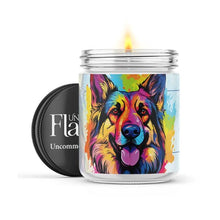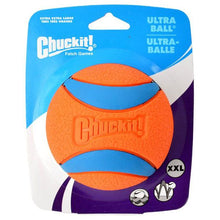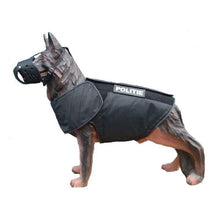Snake Bites: Essential Steps to Take When Your Dog Encounters a Venomous Threat

Each year, approximately 150,000 dogs and cats in the United States are bitten by venomous snakes. Here’s what you need to do if your pet gets bitten.
There are approximately 50 species of snakes in the United States, 21 of which are considered venomous. One of the most important things you can do to protect your pets (and yourself) is to be familiar with what the venomous snakes that live in your area look like and know where you can get emergency care.
The most common venomous snake species are Crotalidae (pit vipers including rattlesnakes, cottonmouths, and copperheads) and Elapidae (coral snakes).

Pit vipers are responsible for most of the snakebites in the United States, according to the Morris Animal Foundation. Of those, rattlesnakes have the highest mortality rate due to their large size and toxic venom. The percentage of bites delivered by species are:
Rattlesnakes 65%
Copperheads 25%
Cottonmouths 10%
Coral snake bites are rarer than pit vipers. However, their venom is more toxic. Coral snakes are related to cobras, but thankfully, their bites result in fewer instances of envenomation since they are smaller.

Pit vipers are found across the United States. Coral snakes are found in the southern Coastal Plain, including from North Carolina, South Carolina, Georgia, Florida, Mississippi, Alabama, Georgia, Louisiana, Texas, Arizona, and New Mexico. Coral snake bites can range in toxicity, depending on their region.
Most snakebites occur between April and October, when snakes and people are more active outdoors, according to the United States Department of Agriculture. About 25 percent of the bites are “dry,” meaning no venom was injected. However, all bites should be treated as though they delivered venom until cleared by a vet.
Symptoms of a Snake Bite
You may or may not see the snake or bite marks on your dog, but the symptoms include:
• Swelling
• Shaking
• Twitching
• Drooling
• Difficulty breathing
• Weakness
• Collapse
• Loss of bladder and bowel control
• Enlarged pupils
• Vomiting
• Paralysis

How to Avoid Snake Bites
Snakes can easily hide and camouflage themselves, which can make them hard to avoid. So be on the lookout for them all the time, day and night. Snakes may also be more active after heavy rains, flooding, fires, or anytime they feel threatened.
To help prevent encounters, keep your yard tidy and eliminate hiding places as best you can. Rake leaves, mow tall grass, remove thick brush, and keep rocks, logs, and other places they can hide out of pet areas. However, snakes are also happy to just hang out on a warm patio or driveway, too.
While out hiking or camping, stick to well-traveled trails and keep a careful lookout when crossing rocks, logs, walking through wild areas, and avoid heavy underbrush. Use caution in near water since snakes can swim. Always carry a flashlight and shake out bedding and clothing before using.

What to do if your Dog is Bit by a Snake
Stay calm
If your dog is bitten by a snake, don’t panic. You will want to keep your dog as calm as possible and that will mean staying calm yourself. Anxiety causes venom to circulate more quickly in the body.
Remove collar and leash
Snakebites can swell, a lot. Immediately remove your dog’s collar, leash, harness, or anything else they are wearing. If you need a leash, turn your leash into a slip lead but remove it when you no longer need it like when your dog is riding in the car.
Identify the snake, if possible
If it’s safe, take a photograph of the snake. Don’t try to kill the snake or waste time trying to capture the snake so that you can take it to the vet with you. They don’t want or need to see the snake to treat your pet. They use one type of antivenin for all pit viper bites and another for coral snakes.
If you know that the snake is a non-venomous species you can relax. Simply wash the wound with soap and water and follow up with your vet, as you would with any situation. Having a picture will help calm your nerves if your dog is bitten by a venomous-looking imposter.

Get to an animal hospital that has antivenin
There is a lot of misinformation about what to do if your dog is bitten by a venomous snake. Treatment can even vary wildly between veterinarians unfamiliar with treating snakebites or that don’t stock antivenin. However, the experts will tell you this:
If your dog is bitten by a venomous snake you need to take it to an animal hospital that carries antivenin. Never assume the bite is a dry bite. In an emergency, if there’s not an animal hospital near you that carries antivenin, go to the nearest vet that can stabilize your dog and then transport it to a hospital that carries antivenin. In each case, call ahead and let them know you’re on your way.
Antivenin is the only thing that will help neutralize the venom to reduce swelling, bruising, tissue damage, pain, hematologic changes, any long-term effects, and can help save your dog’s life.

At the hospital, the vet should perform lab work to determine the progression of the hematologic changes, offer pain management, and give fluids to your pet. In the worst cases, they may offer plasma.
When labs are performed, the vet will be able to tell if the bite was dry, the effects of the toxin, and determine how much antivenin needs to be administered.
The vet should not prescribe steroids (since they don’t help and can cause more tissue damage) or any anti-inflammatory medication (NSAIDS) since they can increase bleeding, which is already at an increased risk due to the venom.
Do not…
• Apply ice
• Use a tourniquet
• Cut the wound to try to suck the venom out
• Use Benadryl instead of getting vet care (Benadryl may be good for allergic reactions, snakebite swelling is not caused by an allergic reaction)
Coral snake bites
If you live in a region where there are coral snakes, you should find out where you can get antivenin and what veterinary hospitals offer life support in the form of a ventilator before you have an emergency. Coral snake antivenin is harder to come by than pit viper antivenin and the last thing you want is to be making these calls in an emergency.
If you can’t find coral snake antivenin, it is still very important that you get your dog to an emergency hospital right away since coral snake venom can cause paralysis and respiratory failure within 1 to 12 hours. According to experts, you may not see punctures or bleeding with coral snake bites so treatment should not be delayed.

Get Support
If your dog is bitten by a snake:
• Call your vet or nearest animal hospital and let them know you’re on the way.
• Join the National Snakebite Support (Facebook) for advice and guidance.
We hope you never need this information but if you do, it will help you save your dog’s life. Please share with your friends.
You may also like: Natural Ways To Keep Ticks Off Dogs
























